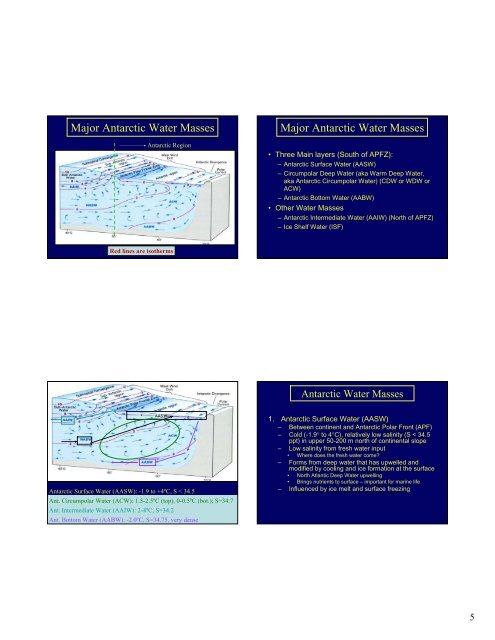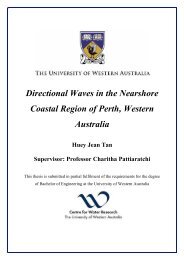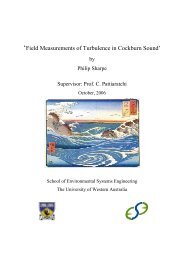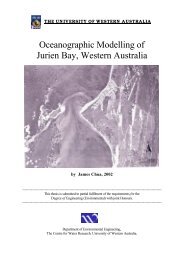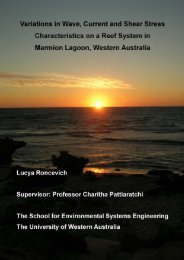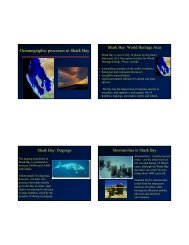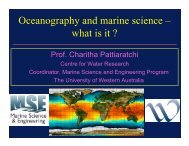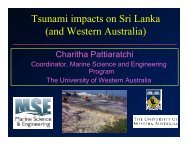Antarctic Oceanography
Antarctic Oceanography
Antarctic Oceanography
You also want an ePaper? Increase the reach of your titles
YUMPU automatically turns print PDFs into web optimized ePapers that Google loves.
Major <strong>Antarctic</strong> Water Masses<br />
<strong>Antarctic</strong> Region<br />
Major <strong>Antarctic</strong> Water Masses<br />
• Three Main layers (South of APFZ):<br />
– <strong>Antarctic</strong> Surface Water (AASW)<br />
– Circumpolar Deep Water (aka Warm Deep Water,<br />
aka <strong>Antarctic</strong> Circumpolar Water) (CDW or WDW or<br />
ACW)<br />
– <strong>Antarctic</strong> Bottom Water (AABW)<br />
• Other Water Masses<br />
– <strong>Antarctic</strong> Intermediate Water (AAIW) (North of APFZ)<br />
– Ice Shelf Water (ISF)<br />
Red lines are isotherms<br />
<strong>Antarctic</strong> Water Masses<br />
AASW<br />
<strong>Antarctic</strong> Surface Water (AASW): -1.9 to +4ºC, S < 34.5<br />
Ant. Circumpolar Water (ACW): 1.5-2.5ºC (top), 0-0.5ºC (bot.); S~34.7<br />
Ant. Intermediate Water (AAIW): 2-4ºC, S=34.2<br />
Ant. Bottom Water (AABW): -2.0ºC, S=34.75, very dense<br />
1. <strong>Antarctic</strong> Surface Water (AASW)<br />
– Between continent and <strong>Antarctic</strong> Polar Front (APF)<br />
– Cold (-1.9° to 4°C), relatively low salinity (S < 34.5<br />
ppt) in upper 50-200 m north of continental slope<br />
– Low salinity from fresh water input<br />
• Where does the fresh water come<br />
– Forms from deep water that has upwelled and<br />
modified by cooling and ice formation at the surface<br />
• North Atlantic Deep Water upwelling<br />
• Brings nutrients to surface – important for marine life<br />
– Influenced by ice melt and surface freezing<br />
5


